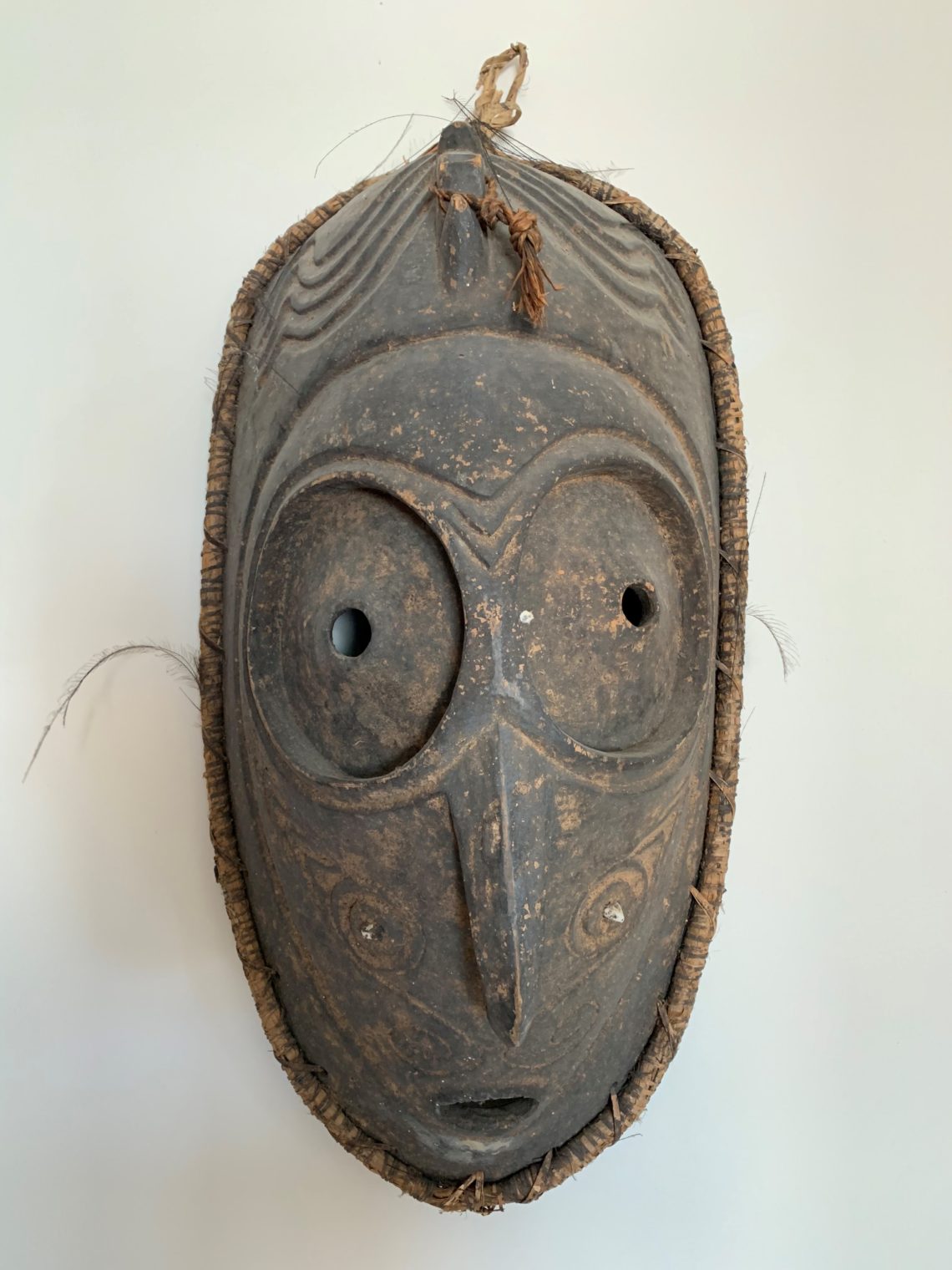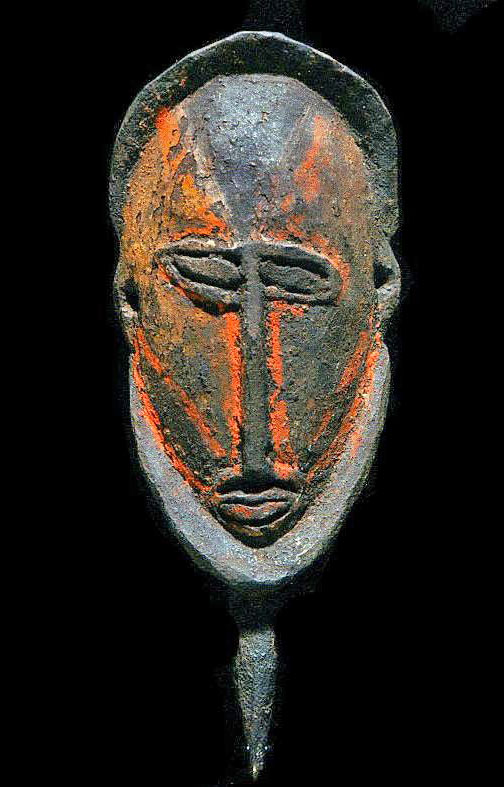 Q: Bought on ebay as Ramu ancestral mask for 225USD. It could be also from the Lower/Middle Sepik River area of Papua New Guinea. Seller claimed that it was collected in the 1970s. Wood, natural fibres, very worn off cassowary feathers and a couple of tips from what it appears to be bore tasks used as a decoration of the cheeks. 64 cm tall. Vesselin, 1618
Q: Bought on ebay as Ramu ancestral mask for 225USD. It could be also from the Lower/Middle Sepik River area of Papua New Guinea. Seller claimed that it was collected in the 1970s. Wood, natural fibres, very worn off cassowary feathers and a couple of tips from what it appears to be bore tasks used as a decoration of the cheeks. 64 cm tall. Vesselin, 1618
A: I think it looks good and may be authentic. Check it carefully to see if carved with natural tools or steel. There were still a few areas in PNG not visited by Westerners in the 1970’s. Or it could be an excellent reproduction. I hope a viewer who knows more about PNG masks will comment on whether this gets an A or a B.
New Guinea, the second largest island on earth, is perhaps best described as a world of its own. This remote area to the north of Australia has remained largely isolated from outside influences both ecologically and culturally. Occupying the western half of this huge landmass is the remote Indonesian province of Papua (formerly known as Irian Jaya); the eastern half composes the mainland of the independent nation of Papua New Guinea.
The diversity of the people of New Guinea is illustrated by the fact that over nine hundred tribal languages are spoken on the island. Along with its own language, each tribe has unique artistic expressions connected with its spiritual beliefs.
Within the realm of primitive art, Papua New Guinea is unparalleled. Perhaps the most vibrant examples of this are the carvings produced in the Sepik River Basin. The Sepik River flows 1,200 km from the central spine of New Guinea to the Bismarck sea, one of the world’s largest rivers in terms of annual flow. Unrestrained by dams or man made controls and having experienced very little exploitation of natural resources, the Sepik and its people remain windows into the past.






